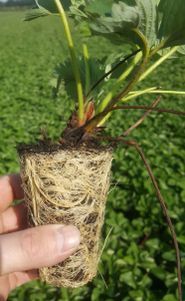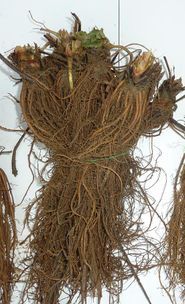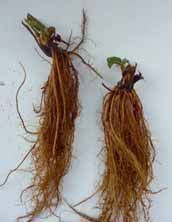Potted green plants are grown from seedlings, which due to the method of propagation do not have direct contact with the soil (this is the safest prevention against soil-borne pathogens). After pricking out, the plants are cultivated under spray until they have formed sufficient roots. Then the young plants are hardened off in several steps.
The ideal planting time for potted green plants is from the end of July to mid-August, which allows for pre-crops (ideally cereals). Due to the root ball, potted green plants can be stored for a short time, so the planting day can be adjusted to suitable weather. Irrigation after planting is necessary. In one culture plate there are 66 to 68 plants, whose root ball has a diameter of about 4 cm.








